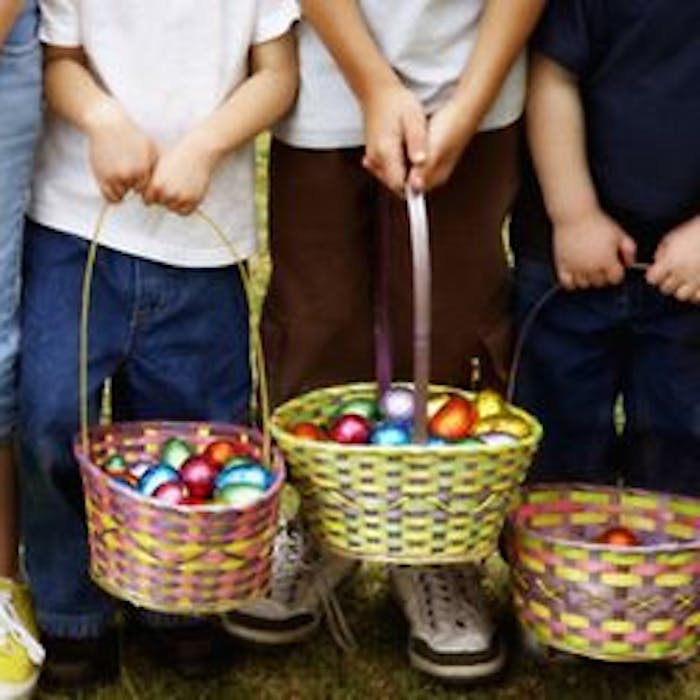
Easter Egg hunts
The custom of the Easter egg hunt has only been a feature of English Easters since the late 19th century. It actually has its origins in Germany, where, according to one tradition, they were invented by Martin Luther to give congregations a lesson about the discovery of the empty tomb.
However, the first written reference to an egg hunt can be found in Georg Franck von Franckenau’s 1682 essay, De ovis paschalibus (‘About Easter eggs’). According to Georg, a hare brought the eggs for the children to find.
The Hanoverians brought Easter egg hunts to England, and Queen Victoria enjoyed egg hunts as a child. On Easter Sunday 1833 she wrote ‘Mama did some pretty painted & ornamented eggs, and we looked for them’. Victoria continued this German tradition with Prince Albert, who hid the eggs in ‘little moss baskets’ for children to find.
Victoria made numerous references to these egg hunts in her journals.
However, unlike the German Christmas tree, which Victoria and Albert did successfully popularise in England, egg hunts didn't catch on as quickly and remained a novelty here until the end of the century. Even in 1892, the poet AE Housman thought it worth noting that ‘In Germany at Easter time they hide coloured eggs about the house and garden that the children may amuse themselves in discovering them.’
But a year later, Cumbrian newspaper The Wigton Advertiser noted that in the village of Aikton ‘on Easter Monday afternoon…an Easter egg hunt was then enjoyed in the Rectory garden, where eggs were discovered of colours and in places that would have astonished the hens that laid them!’
This is the earliest reference to an English Easter egg hunt found in the online British Newspaper Archives, but it seems unlikely that this small Lake District village was the first in the country to hold such a hunt.
The tradition was certainly more widespread by the early 1900s.
In 1902 Hamley’s advertised an ‘Easter Egg Hunt Box’ in The Gentlewoman, calling it ‘A Novelty for Children’s Parties given at Easter-tide.’
The box contained eggs and a hare, which were ‘all to be hidden in suitable places and the children sent to hunt for them.’
There are further records of local hunts throughout the country in the 1900s, and a syndicated columnist in 1907 was satisfied that ‘small Britons, like small Germans, take very kindly to the exciting pastime.’
Even adults got in on the fun in 1908, with an article in newspaper The Queen giving ideas for hosting a ‘properly arranged Easter egg hunt’ for adults, featuring riddles about trees and flowers – but it also conceded that ‘for a party of children it is quite amusing enough to hide lavishly, and turn them loose’.
Further reading
Links to external websites are not maintained by Bite Sized Britain. They are provided to give users access to additional information. Bite Sized Britain is not responsible for the content of these external websites.
